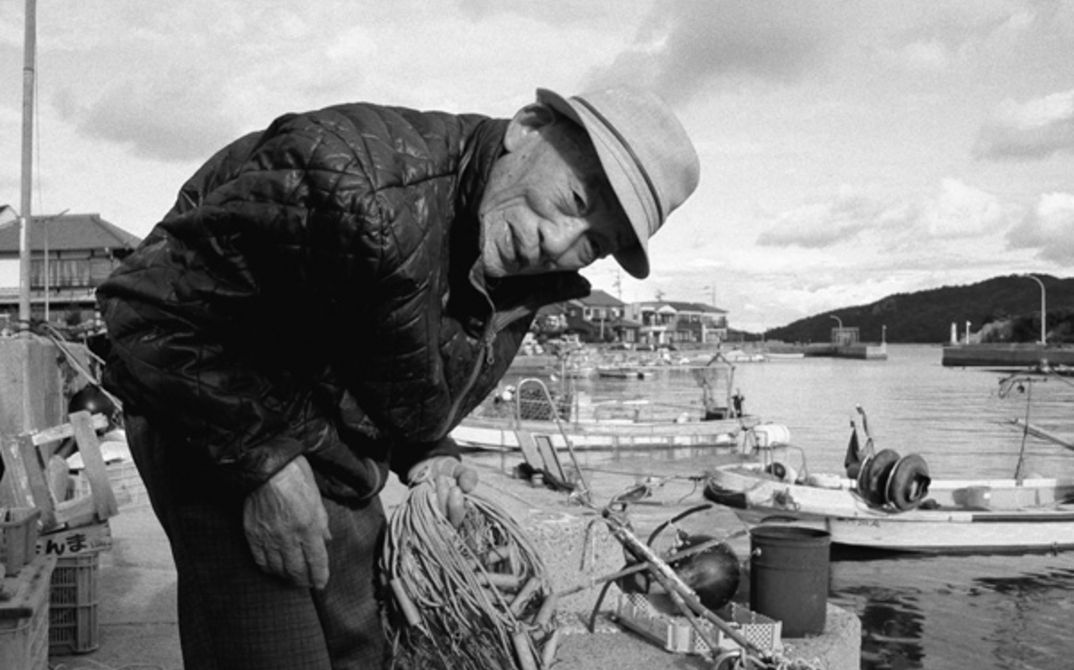122 min. Japanese.
Sometimes Mr Murata thinks that it was just yesterday when he was 50 or 60. “And now I’m pushing 90,” he says.
Like many parts of rural Japan, the fishing village of Ushimado suffers from an ageing population. Every day, Mr Murata still takes his boat out on the inland sea that separates Honshu and Shikoku, two of Japan’s main islands. He sells his catch at the local market, with a large share going to Mrs Koso, who runs the local fish trade and tours the village daily in her delivery van. She knows her customers’ preferences and habits inside out and tells the filmmakers how long each of the empty houses has been abandoned.
Ushimado provides the ideal spot for the patient observations made in Kazuhiro Soda’s Minatomachi, which is shot in mesmerising black and white. This location isn’t just perfect because the film’s producer Kiyoko Kashiwagi’s family hails from the village, nor because Shohei Imamura shot two features here. It’s perfect because all that’s needed is to listen and follow the local people, who – like the elderly Mrs Komiyama – occasionally hijack the camera and tell heart-breaking stories no outsider has ever wanted to hear. (Christoph Terhechte)
Kazuhiro Soda was born in Ashikaga, Tochigi, Japan in 1970 and has lived in New York since 1993. He earned a degree in Religious Studies at Tokyo University, and in 1997, he completed a degree in Film Studies at the School of Visual Arts in New York. He directed fiction films and numerous television documentaries until completing his first full-length documentary, Senkyo, in 2007. Along with making films, Soda also writes non-fiction books and articles for film magazines. His recent publications include “Kansatsusuru Otoko” (2016, A Man Who Observes) and “Nekkyo naki Fashizumu” (2014, Fascism Without Enthusiasm). Soda was a visiting professor at the University of Michigan in the United States until 2017.
